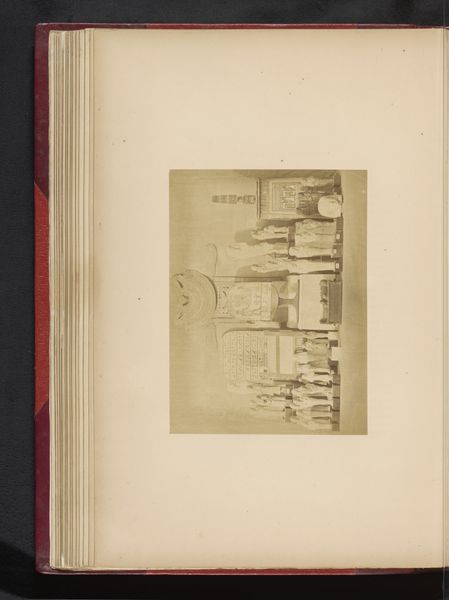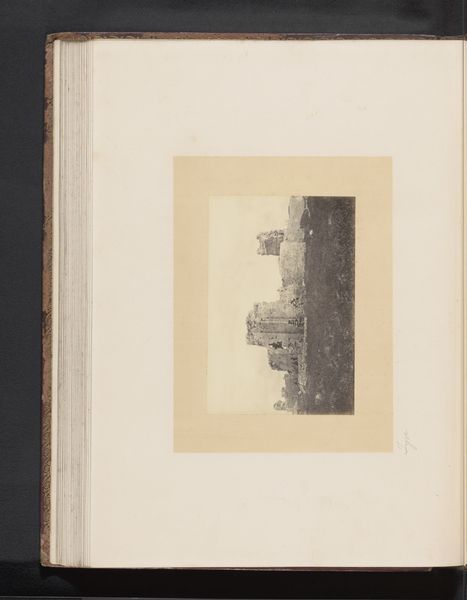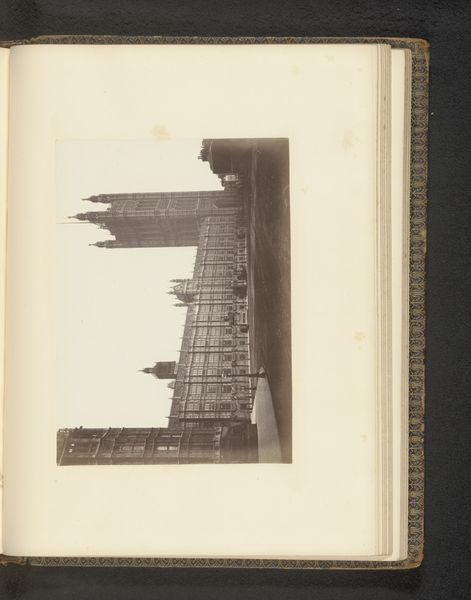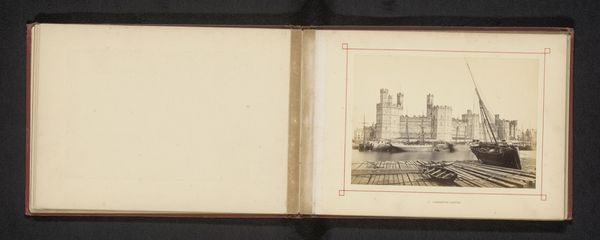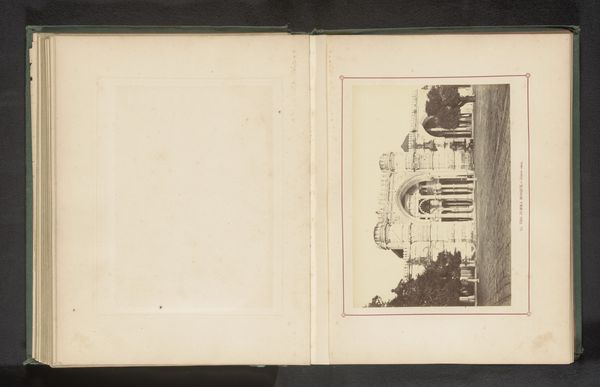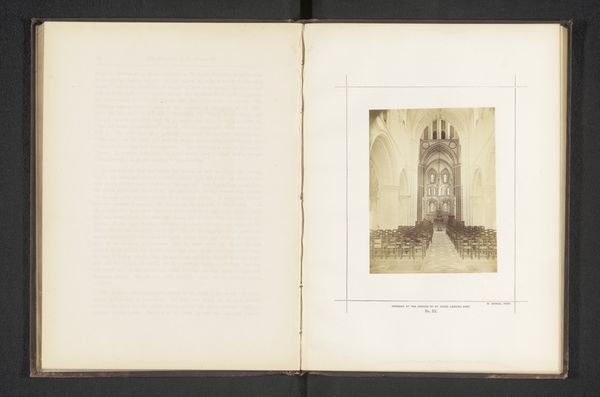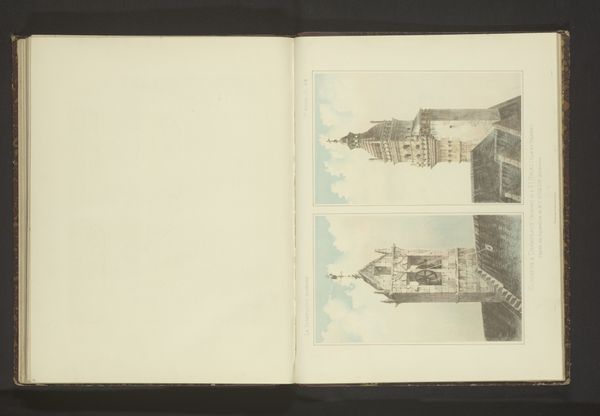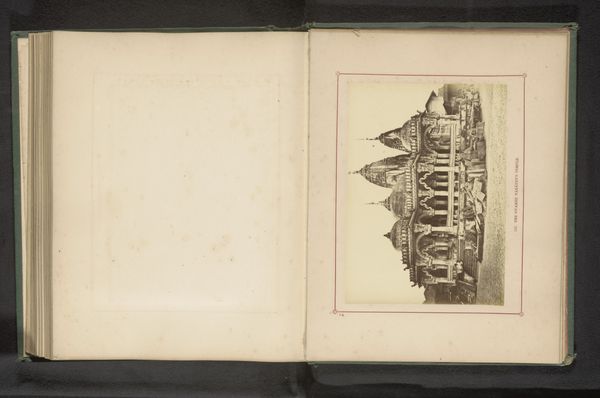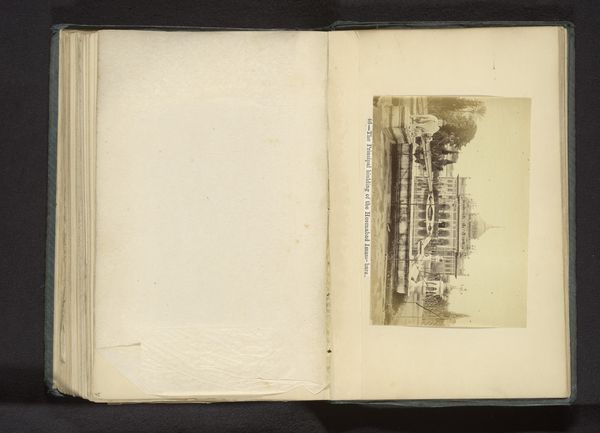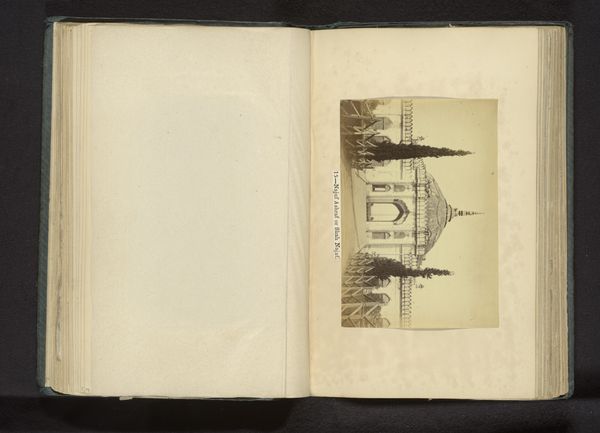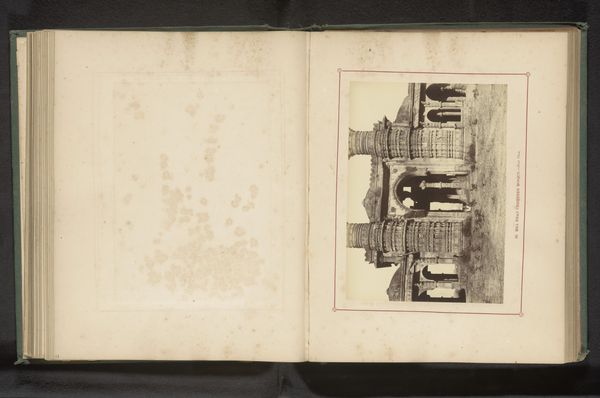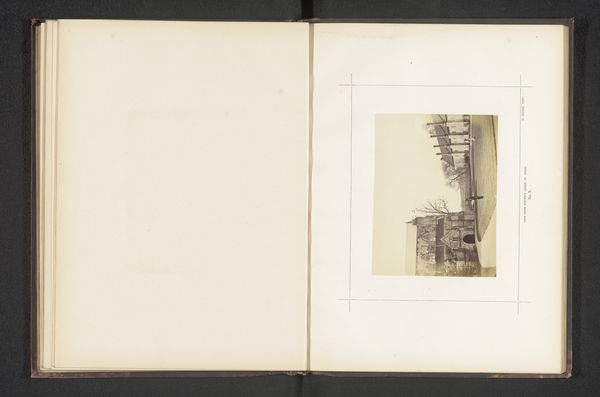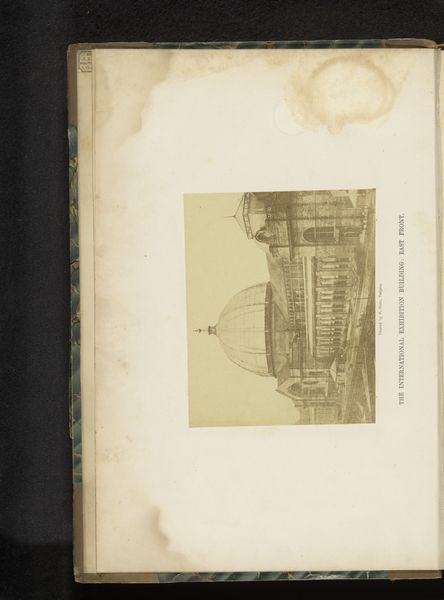
print, paper, photography
#
portrait
# print
#
paper
#
photography
#
coloured pencil
Dimensions: height 140 mm, width 195 mm
Copyright: Rijks Museum: Open Domain
Editor: So this is a print from before 1869 entitled "Gezicht op de troon," attributed to John Harrington. It's quite a somber image, almost ghostly in its depiction of what looks like a throne room. What do you see in this piece, Professor? Curator: This throne isn't merely a seat; it's a symbolic nexus, a point where earthly power attempts to manifest the divine right to rule. Notice the architectural framing – almost a gothic reliquary for a secular saint. How do you think the photographer manipulates light and shadow to emphasize this sense of the throne’s... spiritual authority? Editor: It definitely gives it an almost supernatural aura, doesn't it? The light seems to emanate from the throne itself, like it's holy. It’s like something you’d see in a church. Curator: Precisely! Consider how the architectural details—the arches, the columns—echo those found in cathedrals. Royal power often adopted visual languages from the church to legitimize their sovereignty. What kind of psychological effect does the image produce through these cues of legitimacy? Editor: Well, I suppose seeing that imagery transfers that sense of respect, that power and divine authority from the church, over to the throne itself. Making people accept it. Curator: Exactly. It speaks to a deep cultural memory, that desire for order and legitimacy that monarchy played into. It's also fascinating how the image feels somewhat distant, slightly obscured – almost as if to suggest the throne’s untouchability. Editor: It’s definitely given me a lot to think about, looking past the surface level of the print and into the deeper implications. Curator: Absolutely. Symbols, in their essence, invite us to unlock stories we collectively remember. It’s been a worthwhile unpacking of cultural significance today.
Comments
No comments
Be the first to comment and join the conversation on the ultimate creative platform.
